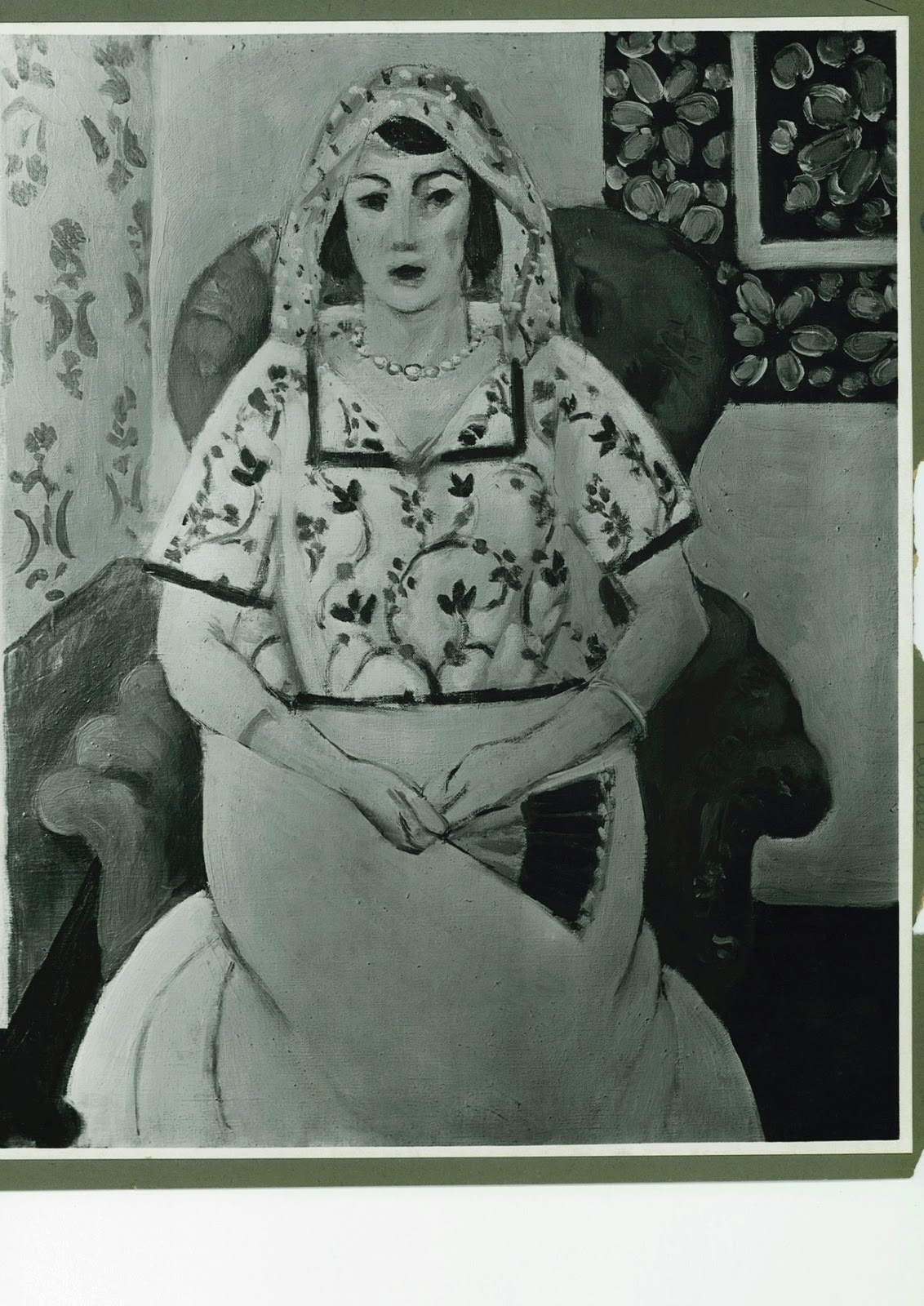News:
Israel lagging behind world in returning stolen Holocaust-era art
By Ofer Aderet
While Israel has complained about other countries failing to return looted artwork, it was one of the last to pass a law requiring restoration.

A Norwegian museum agreed in 2013 to return this looted Matisse, "Woman in Blue in Front of a Fireplace," circa 1937, to the family of Jewish art dealer Paul Rosenberg.
Israel is lagging behind the rest of the world in locating and returning works of art stolen from their owners during the Holocaust, Stuart Eizenstat, an expert on restoring Holocaust art to the original owners and a former U.S. deputy secretary of the treasury, said in Tel Aviv on Tuesday.
Speaking at a Tel Aviv conference organized by Israel’s Company for Location and Restitution of Holocaust Victims’ Assets, Eizenstat, who was appointed by then-U.S. President Bill Clinton in the 1990s to research stolen Nazi artwork, said the Israeli government could have played a significant role in returning the looted art, but did not do so.
Elinor Kroitoru, who heads the asset location and information division at the restitution company, said in an interview that Israel could learn something from Germany on this matter. She said Germany has shown it can research the provenance of art and take responsibility for Nazi-era theft, but added that Israel cannot expect Germany to do all the work.
“They need to be partners, to share information, but not to work in our stead,” she said.
The Nazis looted some 600,000 works of art from Jewish collectors and gallery owners during World War II, most of which have never been returned to the owners or their heirs. Some are exhibited in museums all over the world and others are in the hands of private collectors. In recent years, a number of international conferences have been called in an attempt to deal with the problem and initiate legislation on the matter.
A number of these works were brought to Israel after World War II and are now at the Israel Museum in Jerusalem, as well as other museums around the country.
Indeed, while Israel has repeatedly complained that other countries have failed to return artwork stolen during the Holocaust, it was one of the last countries to pass a law requiring the return of looted art, Reuven Merhav, the chairman of the executive committee of the New York-based Conference on Jewish Material Claims Against Germany, told Haaretz.
In 1998 Eizenstat co-chaired the Washington Conference on Holocaust-Era Assets, at which 44 countries committed to act to locate looted artworks and to identify the original owners. Israel, however, did not pass the Holocaust Victims’ Assets Law until 2006.
A number of Israeli museums have acted to return such art to the original owners, and the Israel Museum has returned 10 works of art, including several important and valuable paintings, to their legal owners.
The question of stolen art hit the headlines recently after it was revealed that Germany had found a huge trove of art, estimated to be worth about 1 billion euros ($1.36 billion), which also includes works suspected of having been looted during the Holocaust or shortly before.
A special investigative team is still examining the provenance of these works and will try to return any looted art to its lawful owners, and Israel and Germany signed an agreement this month governing bilateral cooperation on researching the background of artworks suspected of having been stolen.
Israel’s restitution company says there is still a lot of work to be done. Dozens of curators from all over the country will gather this week for a training seminar on how to research the provenance of paintings confiscated during the Holocaust.
“This is not regular provenance research,” said Kroitoru. “The databases here are different. It works differently.”
The restitution company began searching for looted art only last year, and has yet to have a major success.
“It is very, very difficult,” said Kroitoru. “There are a lot of pencil and charcoal marks and it is not clear who made them, and it is even harder to [know] who the owners are. In some cases there is no signature on the artworks and we have no raw material to start the investigation with.”
Kroitoru has a staff of 30 people, but not all are involved in the restitution of stolen art. They sometimes use the help of outside experts and cooperate with Jewish communities overseas to share information.
It will take years of hard work to say Israeli museums have no looted artwork in their collections. “We want to be the catalyst, to create a process, to arouse public awareness, and to bring about appropriate legislation in the Knesset,” said Kroitoru.
http://www.haaretz.com/jewish-world/jewish-world-news/1.601101


